What exactly is ‘heavy psych’, ‘stoner rock’ or ‘space rock’? These labels seem to be popping up more often on Spain’s gig posters and Instagram hashtags, however, there seems to be some confusion, even misgivings at times, around these music styles. Having grown up in the States, I’ve been listening to psychedelic and stoner rock most of my life. In fact, you probably have, too. After all, these subgenres are far from new.
Para leer en ESPAÑOL, haz click aquí
Start by taking the best psychedelic rock of the ’60s and ’70s – names we all love like Grateful Dead, The Doors, The Jimi Hendrix Experience, The Who, or even Cream, and beef up the bass and rhythms with a modern, muscular edge. What you get is a sonic tapestry woven with intricate threads of psychedelic exploration and visceral intensity. In other words, heavy psych.
Synthesizers and other electronic instruments were added and the groundwork was laid for kraut and space rock. Distinguished by its emphasis on atmospheric textures, and experimental sonic effects, this subgenre crafts an immersive experience akin to floating through the cosmos.

Trailblazing bands like Pink Floyd (exemplified in the extended instrumental passages and meandering guitar solos in A Saucerful of Secrets and Meddle); Hawkwind (listen to Space Ritual, as ‘God’ – aka Lemmy – fervently melds hard rock, psychedelia and science fiction-inspired lyrics); Gong (their Radio Gnome Invisible Trilogy features a diverse lineup and eclectic musical approach that leads to whimsical storytelling, intricate instrumentation and cosmic vibes); Amon Düül II (check out their album, Yeti); and even the more electronic Tangerine Dream, all played pivotal roles in creating a sense of interstellar music exploration and shaping space rock into what it is now.
This captivating subgenre nestled within the expansive realm of rock and roll, is a fusion of mind-altering psychedelia and pulsating heavy rock that propels listeners into a cosmic journey where distorted guitars, hypnotic rhythms, and kaleidoscopic soundscapes intertwine.
Today, Colour Haze is a perfect example of all this. Although the band is considered by many to be one of Germany’s oldest stoner bands, their extended instrumental passages and distorted guitar riffs spiral into otherworldly realms, allow them to push the boundaries of sonic experimentation.
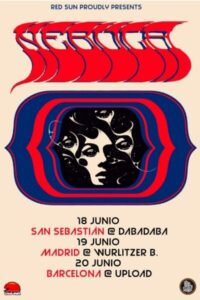
So, what exactly is ‘stoner rock’? Last summer, when I heard that Noise on Tour was bringing Eddie Glass over to Spain with Nebula, I wrote a little bit about the so-called ‘stoner’ movement, the desert rock trifecta (Kyuss, Fu Manchu and Monster Magnet), and their connection with Seattle and grunge.
Marc from Red Sun Barcelona sums it like this: “Stoner rock basically draws from ‘70s bands like Black Sabbath, Led Zeppelin, Cactus, etc. Then, in the ‘90s, Kyuss appeared, another clear reference that many call the ‘fathers of stoner music’. The style usually includes downtuning, sonic density and Sabbathian riffs…»
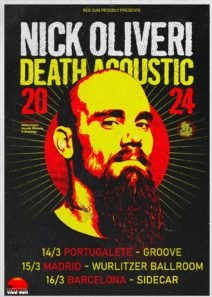
As you can see, it’s not easy to define this type of music. Fortunately, Álex, Gorka, Marc and Nuria – four diligent promoters dedicated to nurturing this vibrant scene across the Iberian Peninsula and beyond – have kindly offered their thoughts on some of this.
So, what should we call this music? Stoner? Desert? Heavy-psych? Space rock…? For me, the answer is simple – GOOD music!
“Music shouldn’t be labeled; either you like it or not. The band is good or not. However, it is true that labeling music can help us when we are discovering new bands.” – Gorka, Noise on Tour
It’s undeniable that the music that Gilmour, Clapton, Morrison, Hendrix or Lemmy created was ‘good’. Well, this is just the continuation of all that… with slower, heavier bass lines and different drugs.
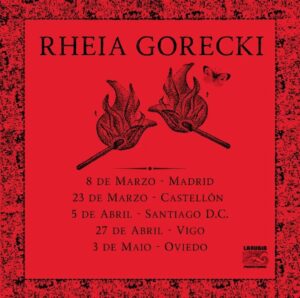
The bands we all love from the ‘70s have evolved and helped forge today’s heavy-psych and doom/stoner heavyweights, including some of our favorites: Earthless, Kadavar, All Them Witches, Elder, Pallbearer, Ecstatic Vision or Uncle Acid & the Deadbeats. More recently, lineups that include bands like Electric Wizard, Slift, Black Rainbows, Temple Fang, Steak, Acid King, Pigs x 7, Sasquatch, Truckfighters or Siena Root can be seen all over Europe.
It’s “music that I fall in love with. When I listen, it has to blow my mind and somehow transport me to a different place, a different time… It has to move me and really shake me up, whether it be physically because it makes me quake and dance, or mentally because it leaves me in awe.” – Nuria, La Rubia Producciones
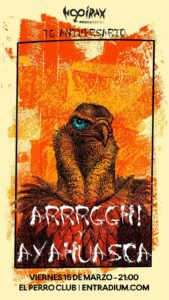
Their following is just as loyal as it was back in the day, too. While the music is solid, seeing these bands live is a true ‘experience’. There’s simply no other genre that brings the same level of energy and emotion to the stage.
“In general, the audience has a very broad musical culture and are true fans of the bands. People who go out just to socialize don’t usually come to our concerts.” – Noise On Tour
In fact, thanks to promoters like Noise On Tour, we’ve been able to see some of our favorite international rock bands play here in Spain. They feel proud to have done their part to help countless bands grow into internationally-renowned forces of nature like the above mentioned Colour Haze, along with other favorites of ours, like King Buffalo, Slomosa, or 1000mods and Villagers of Ioannina City, another couple of Greek bands that we gushed about a year ago here at Dirty Rock.
Their hugely popular Kristonfest showcases a diverse lineup of powerhouse bands every year. For example, 2023’s lineup included Graveyard (who, in ‘6’, have crafted a magnificent work of art that I consider to be their most perfect and intelligent project to date), The Obsessed (including ‘Wino’, the father of doom), the French trio Mars Red Sky (who will be back in Spain next month alongside Ukrainian hard rockers, Stoned Jesus) and Spain’s own Rosy Finch.
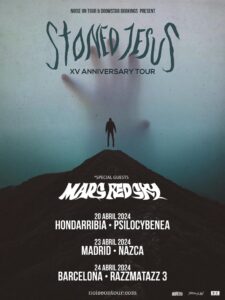
Even though I’ve been keeping tabs on these bands for years, it’s only recently that I’ve noticed a slight boom in the Spanish audience’s interest in this type of music, despite all the challenges that the music industry is experiencing recently:
“In many cases, it’s all about logistics; it’s become really expensive to tour. Many bands tell us that they want to play in Spain and Portugal, where there’s usually a good turn-out, but that it means crossing France, where they don’t get much love... The good thing is that those of us who are really into this music are loyal and we don’t mind devoting time to finding new bands, really listening to them and even traveling, if necessary…” – Noise On Tour
Thankfully, Spain is lucky to count on a number of ‘loyal’ promoters. Marc from Red Sun Barcelona points out that “the audience of these genres are usually huge fans, enthusiastic and are usually very respectful of artists, but there aren’t as many followers in Spain as in the rest of Europe.”
However, RSB’s annual Riff Ritual Fest has been showcasing the heavy riffs and hard-hitting rhythms of some of the biggest bands in the scene, such as Nick Oliveri (Kyuss, QOTSA, Mondo Generator), who is incidentally on his way over to resurrect his famed Death Acoustic, or Greenleaf, Swedish titans who perfectly fuse stoner vibes with heavy melodies.
They’ve also brought over Bongzilla, in all their down-tuned, doomy sludgy splendor, Acid Mammoth, another Greek band I’ve only seen outside Spain up to now, and Yawning Man, the “greatest band ever” according to the legendary Brant Bjork.
“Stoner and doom are, without a doubt, ‘underground’ styles in Spain. They seem to be growing very slowly and I think the audience is bigger today than it was 10 years ago. Obviously in larger cities like Madrid and Barcelona the following is larger…, but we are still far from Germany, Switzerland, etc.” – Red Sun Barcelona

In spite of all these hurdles, two other local promoters, Nooirax Producciones, with Álex at the helm with his more than 20 years of experience in the so-called ‘underground’ music scene, and Nuria, heading up LaRubia Producciones, who work tirelessly (and sometimes collaboratively), to help up-and-coming bands tour all over Spain and the rest of Europe, as their musicians flaunt their repetitive trance-inducing rhythms, extended instrumental passages and cosmic sounds.
«Recording is much easier and cheaper than it was a few decades ago. That means there are many new bands springing up. I think that’s a good thing. […] Young people want to express themselves and that’s healthy and positive.” – Red Sun Barcelona
Some of them are instrumental, like the Dutch trio Bismut, with their doomy vibes and long jams chock-full of unrelenting, scathing riffs and heavy, hypnotic bass lines paired with drum passages that range from funky to almost overwhelming.
Norway’s Kanaan have blown me away a couple times with their masterful, jazzed-up instrumental passages that are somewhat more progressive than Madrid’s own Deriva, and their post-rock instrumental grooves that will have you bobbing your head non-stop.
“The underground scene will resist as long as small promoters are willing to risk their money and venues don’t throw in the towel. Recently, we’ve seen colleagues and concert halls with long legacies disappear, so I can’t say I’m too optimistic about the scene right now.” – Noise On Tour
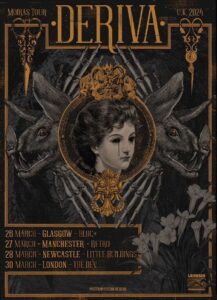
Even so, there’s been a noticeable surge in local bands erupting on the scene lately. Keep an eye out for the raw, desert-psych stoners Wet Cactus from the north of Spain: they’re making a lot of noise throughout Europe. A couple weeks ago, I saw them bulldoze the crowd in Madrid alongside Nethervault, who perfectly combine doom and fuzz with low, slow, stoner riffs.
Krazark, basically a stoner band, conjures up echoes of classic American rock and metal, while Bones of Minerva’s melodies are dreamlike. Their proggy, heavy riffs are daringly close to black metal at times while Blue’s ethereal vocals that range from guttural to almost Arabic whisk you away on the wings of nostalgia.
Although these names might sound new to you, some of them, like the previously-mentioned Rosy Finch, are quickly becoming veritable household names here in Spain. The Spanish duo Bala, for example, have recently received four different Premios MIN (Spanish Independent Music award) nominations for their song, “Prisas”.
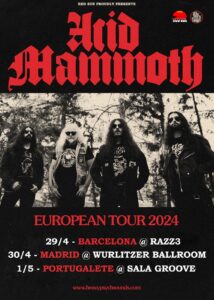
As I said, there are loads of great and up-and-coming bands in the Spanish scene right now.
Here are a few that have caught my attention in the last couple of years: the stoner-psych duo Greengoat, who feature heavy rhythmic progressions, distorted jams and fuzz, Terrestre, and their loops and drawn-out rippers that rise and fall in intensity, Big Muff Brigade, or Free Ride, with their fuzz-laden, old-school California vibes. Flames of Foe, Electric Valley, Rheia Gorecki… and the list goes on. There are too many local bands to name all of my favorites.
“All the bands I work with must possess that elusive ‘je ne sais quoi’ that sets them apart. A captivating live act, exuding either attitude &/or aptitude, is also an absolute essential. In every instance, music must pulsate through their veins, infusing their very essence. These are not bands merely dabbling in composition or taking to the stage on a whim; rather, they are driven by an undeniable compulsion to create and perform.” – La Rubia Producciones
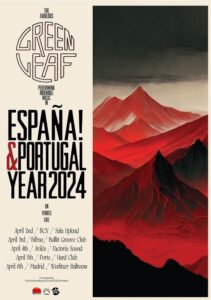
If you’re not familiar with this style of music, now’s the time to give it a chance. The fan base is growing and both new and more established bands are constantly putting out new music.
The culture around the heavy-psych scene is growing, too, extending beyond music and its ‘stoned’ image to influence a number of visual, social, and environmental aspects of our society.
The visual aesthetics have given rise to some incredible art in album covers, posters, and music videos that celebrate psychedelic, cosmic and nature-related elements. In fact, many bands incorporate lyrics and themes that encourage a deeper appreciation for the natural world.
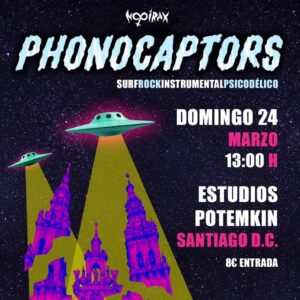
The movement has influenced the development of other alternative rock subgenres, contributing to the sonic diversity of the global music scene and sparked a rising number of festivals all over the world that cater specifically to this subgenre, thereby fostering a surprisingly supportive and respectful community.
Although, as Nuria (La Rubia Producciones) noted, “being respectful and having a good time is not at all incompatible in the concerts we organize”.
“At the core of human connection lies mutual respect and harmony. From these simple principles, the magic of personal connections naturally emerges. I see music as a universal language that brings people together, regardless of their differences. […] It’s truly beautiful when we all find our place and can experience life in our own way, while still being in sync with each other.” – Álex, Nooirax Producciones
All these cultural contributions that promote the creative independence of the archetypical ‘punk DIY’ reflect the diversity and creativity that characterize these subgenres.
That said, we think you should listen for yourself. My BFF and faithful concert cohort, Rafael Pajares, and I have compiled a Spotify list with some music we think best sums up this hard-to-define style:
I’d also like to leave you with some of our favorite promoters’ recommendations:
«A couple bands that have caught my attention recently are the Scottish group DVNE (if you like bands like Cult Of Luna or Mastodon, you’ll love them!) and IRON JINN (experienced musicians that come from bands like Molasses, The Devil’s Blood who I discovered thanks to Stickman Records and the inspirational Roadburn festival.” – Gorka, Noise on Tour
I’d mention “so many of them, but right now [I’d have to say] Phonocaptors. We’ve just released their third album and are currently in full promotion. I’ve seen them grow and even though they were good before, now they are even better.” – Álex, Nooirax
“I’m proud of many bands we have worked with, both at nationally and internationally: La Chinga, Sasquatch, Keloidop, Electric Valley, Fuzz Forward… I think they deserve so much more.” – Marc, Red Sun Barcelona
«I guess the rest of the bands I work with won’t be jealous if I categorically say that Bones of Minerva are the apples of my eye. We’ve grown together. In their greatness and generosity, they have relied on me and welcomed me into their creative and personal maelstrom. […] I’d also like to mention that all four of them, Chloé, Nerea, Ruth and Eustaquia, are so talented and have that ‘je ne sais quoi’ I talked about before – but elevated to the nth degree. [Aside from that,] this year I’m working with three very different proposals that I’d love for more people to have on their radar: Moloch, Rheia Gorecki and Deriva. If you like music in general, they’ll surely get your attention. […] And finally, there are my more international proposals: Healthyliving and Maud the Moth. I’ve sold hundreds of vinyls with Healthyliving and have been featured in stories by prestigious publications. And it’s all been a complete joy with Maud the Moth, who, by the way are recording a new album.” – Nuria, La Rubia Producciones
Oh, and Gorka, (Noise on Tour) reminds us to “get out and see these bands live and buy their music – they can’t even buy picks with what they get from today’s streaming!” It’s also important to “share information if you like the music so the community of followers can grow,” according to Álex, Nooirax.
Nuria (LaRubia) agrees: “I think the most important thing is to spread the news if you liked the band; be their best ambassadors. There are playlists, algorithms and all kinds of things that help but word of mouth still works… My bands put a lot of effort into their t-shirts and vinyls and most fans understand that. After the concert, the ‘fan phenomenon’ mixes with the audience members’ support as they gather around the band’s merch table…» – Nuria, La Rubia
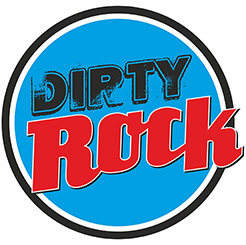
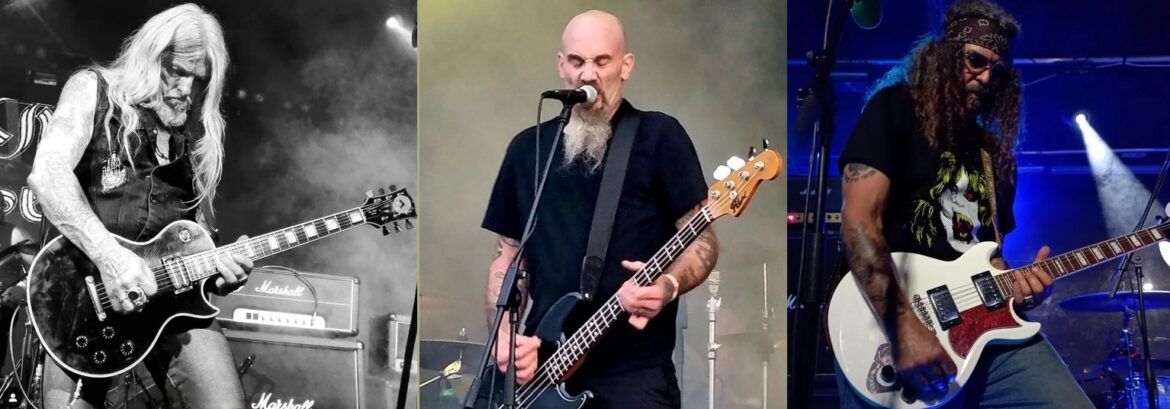
3 Comentarios